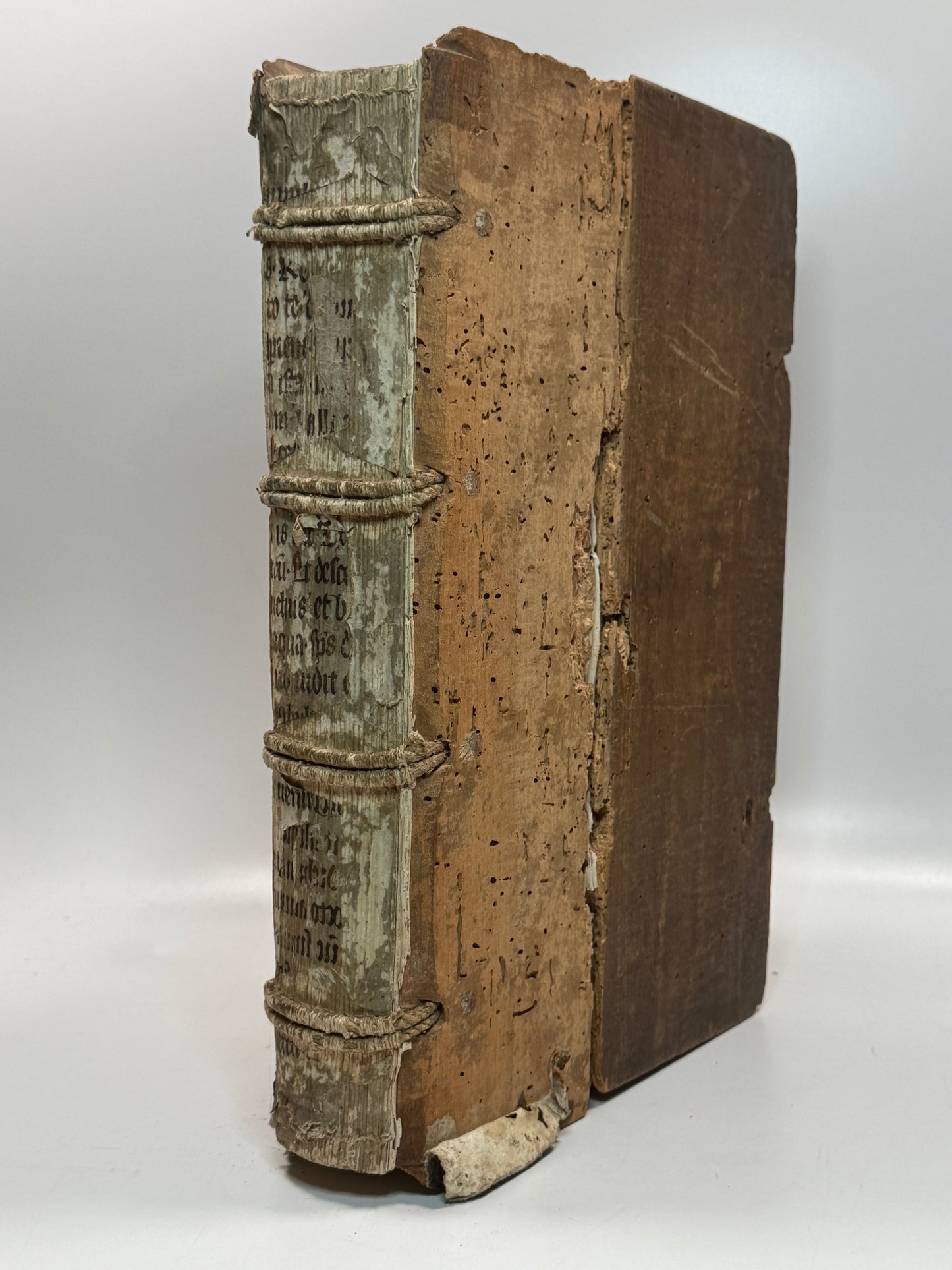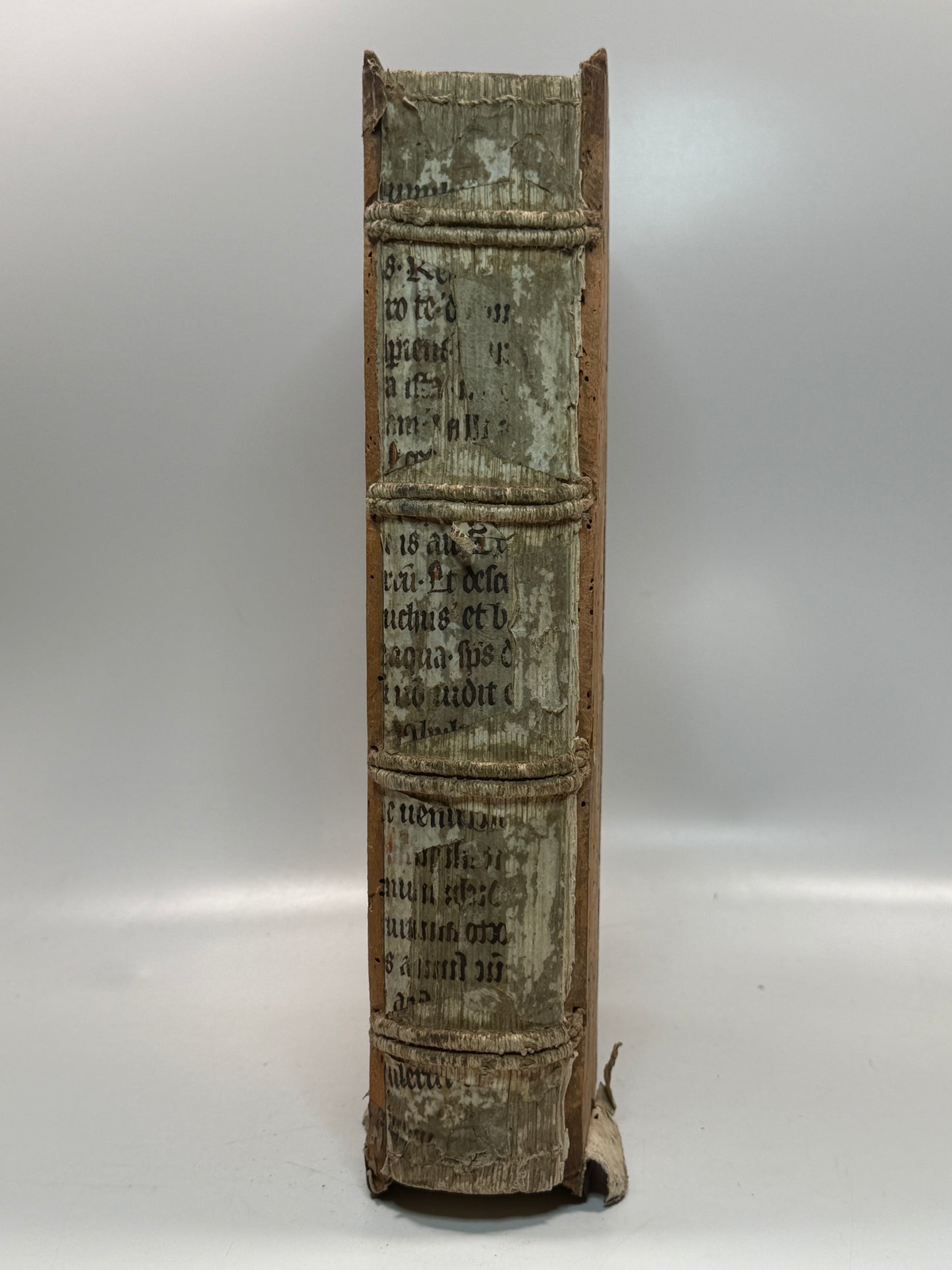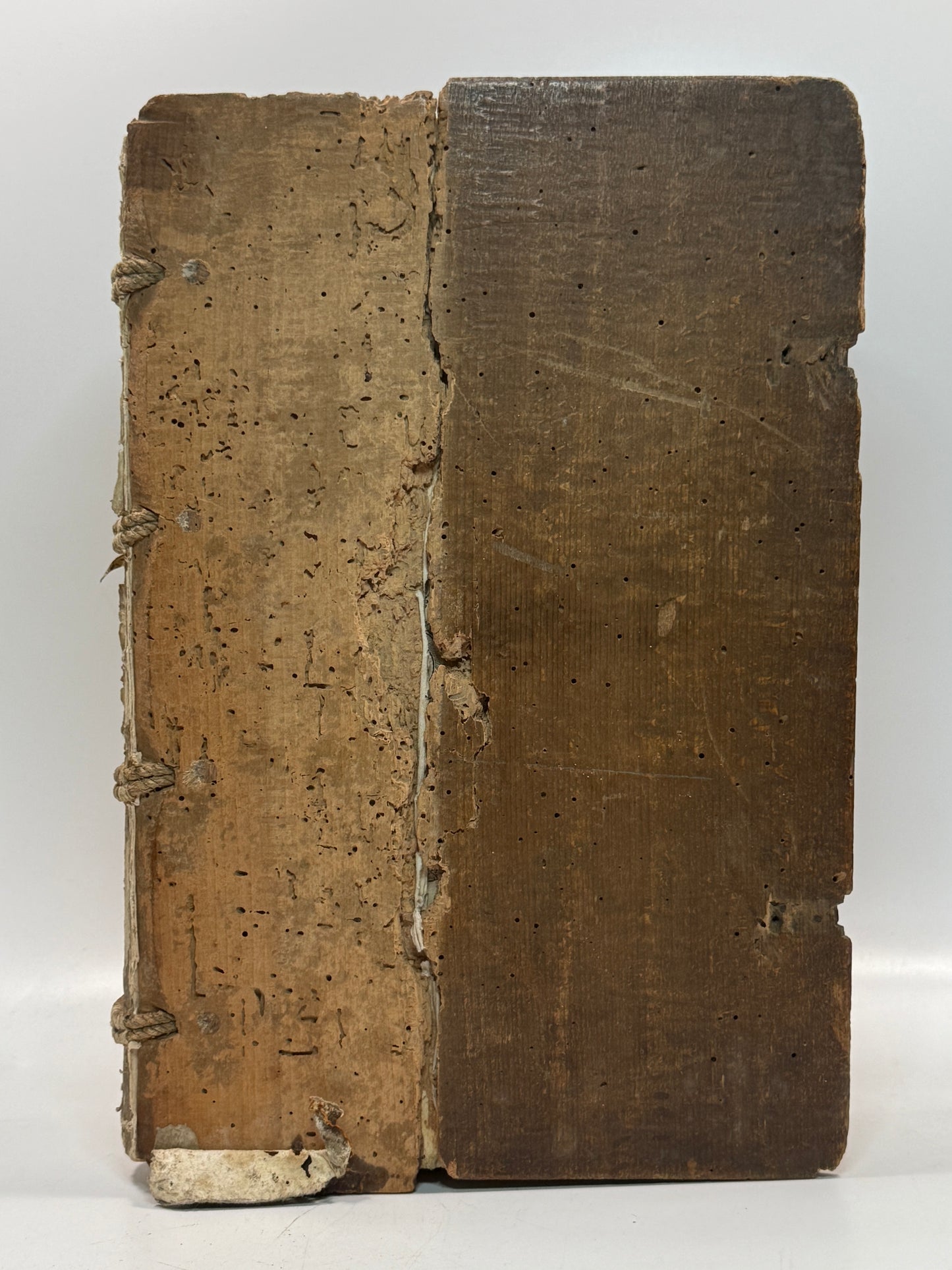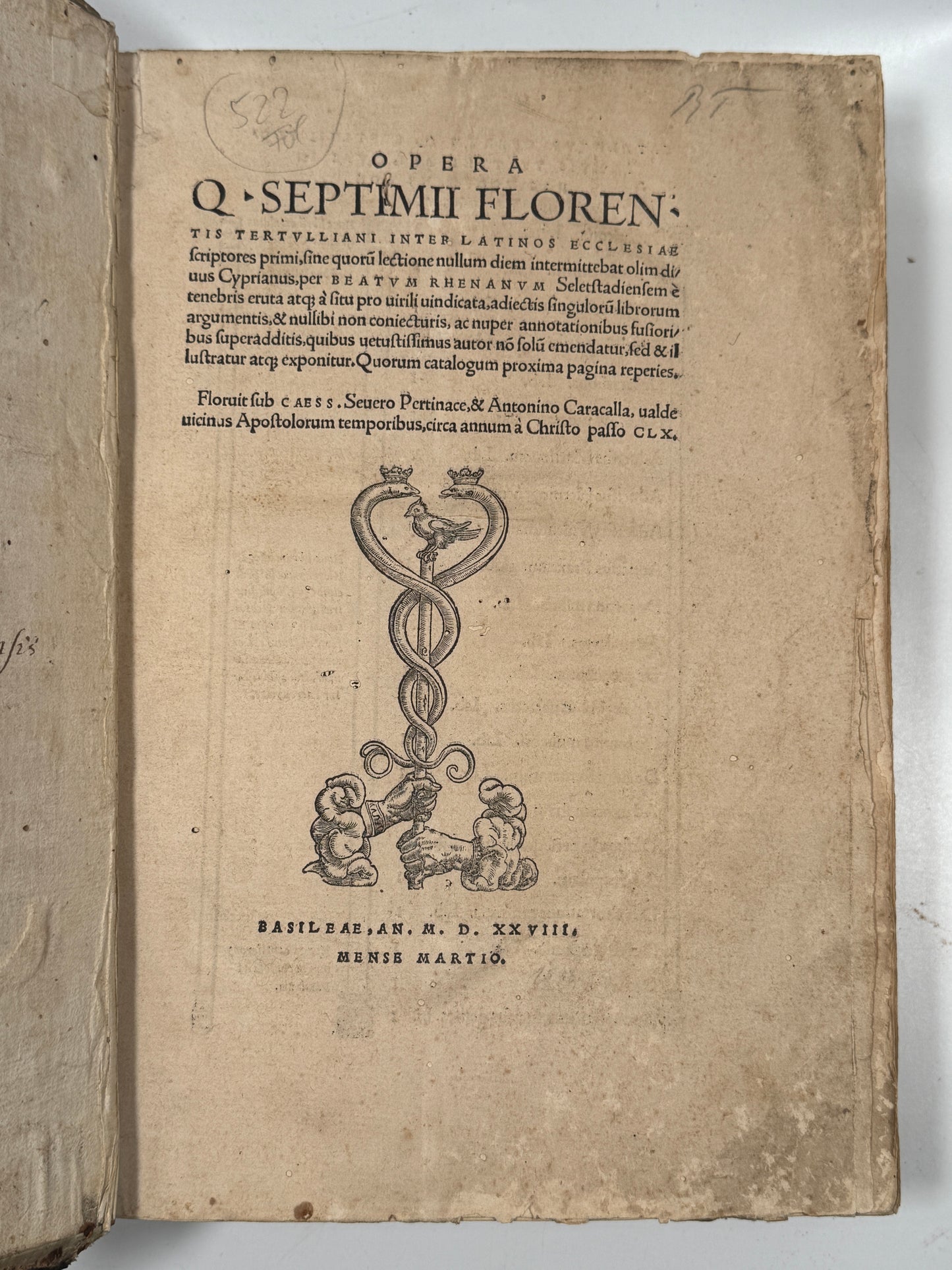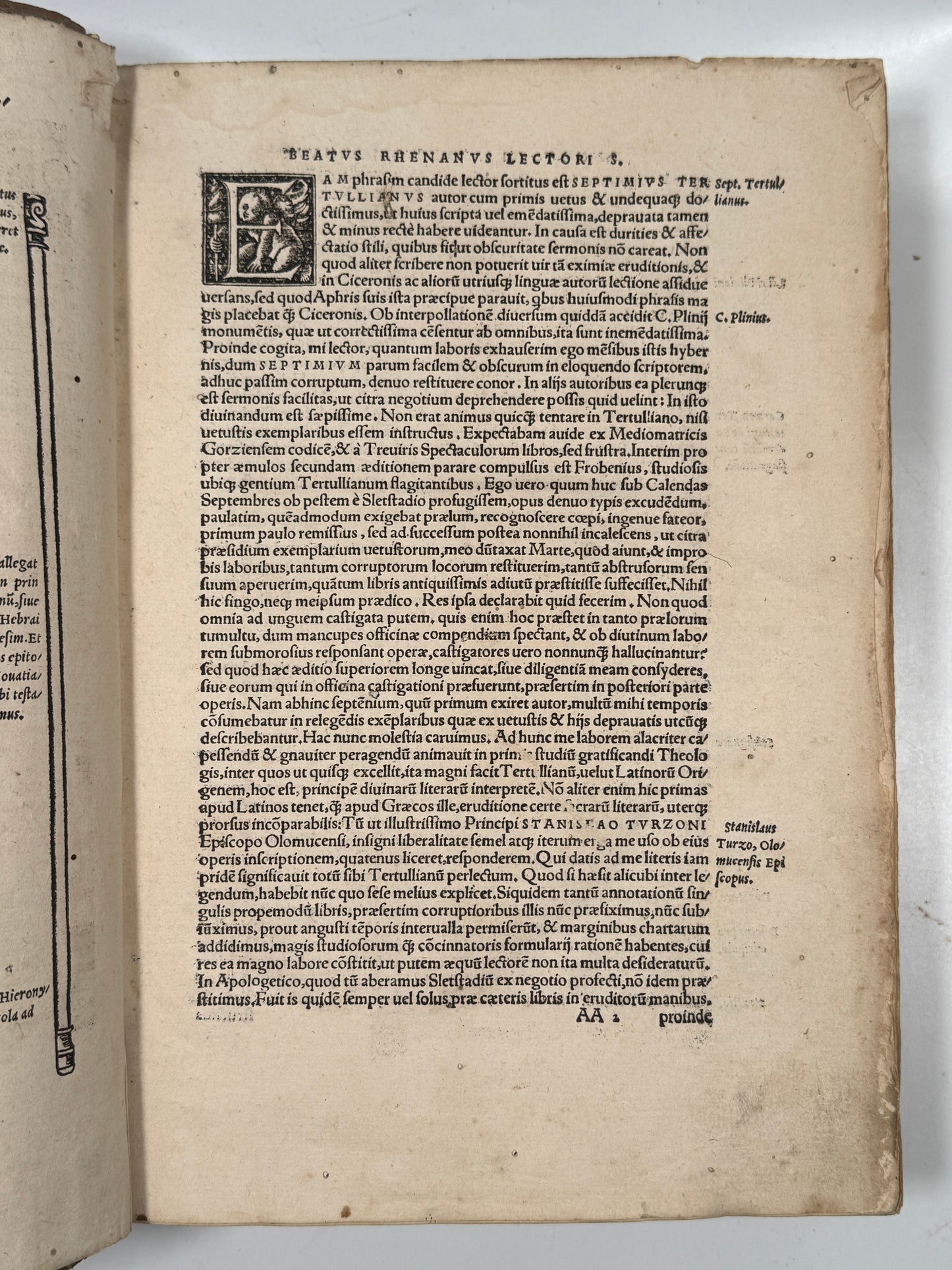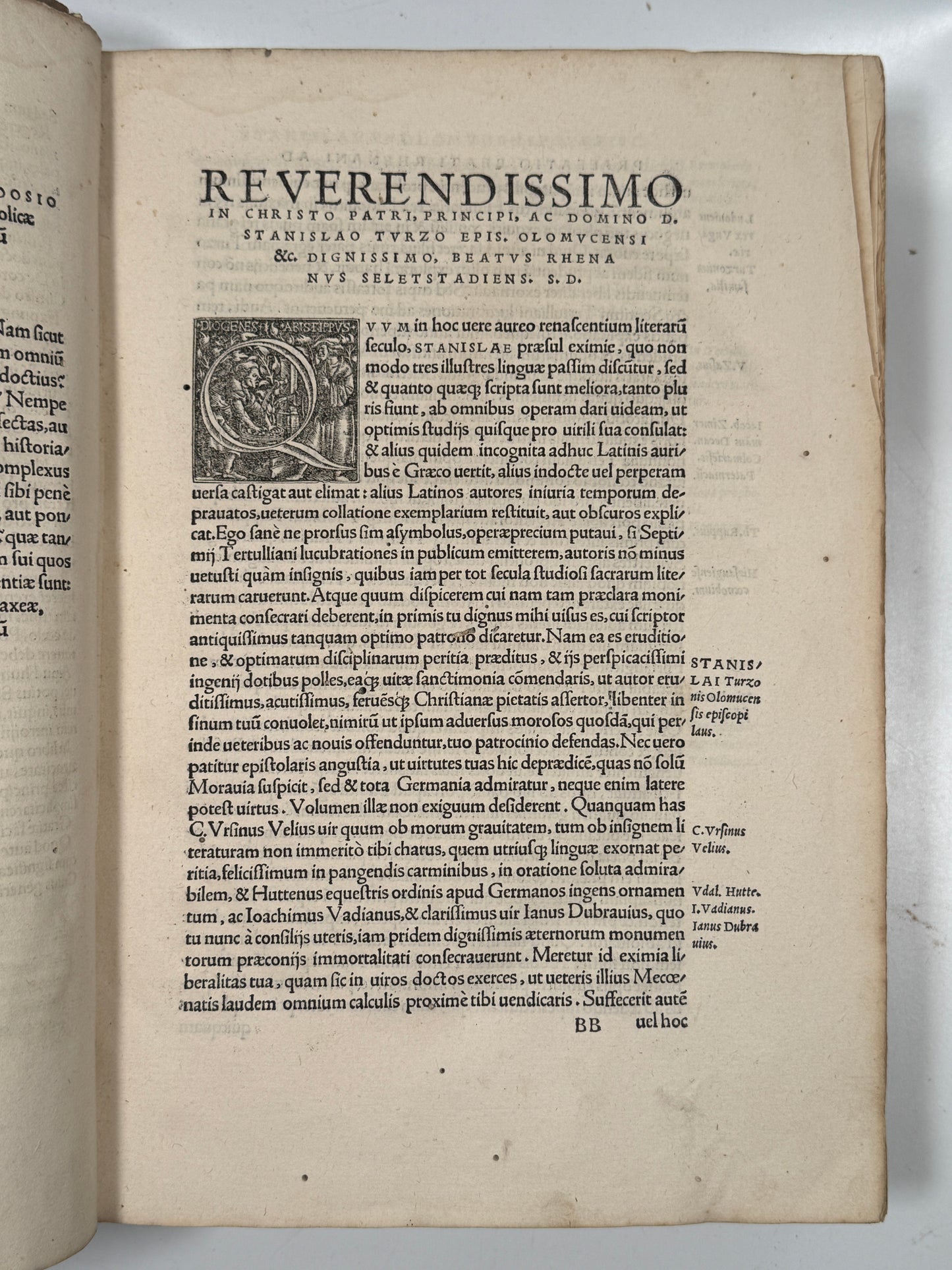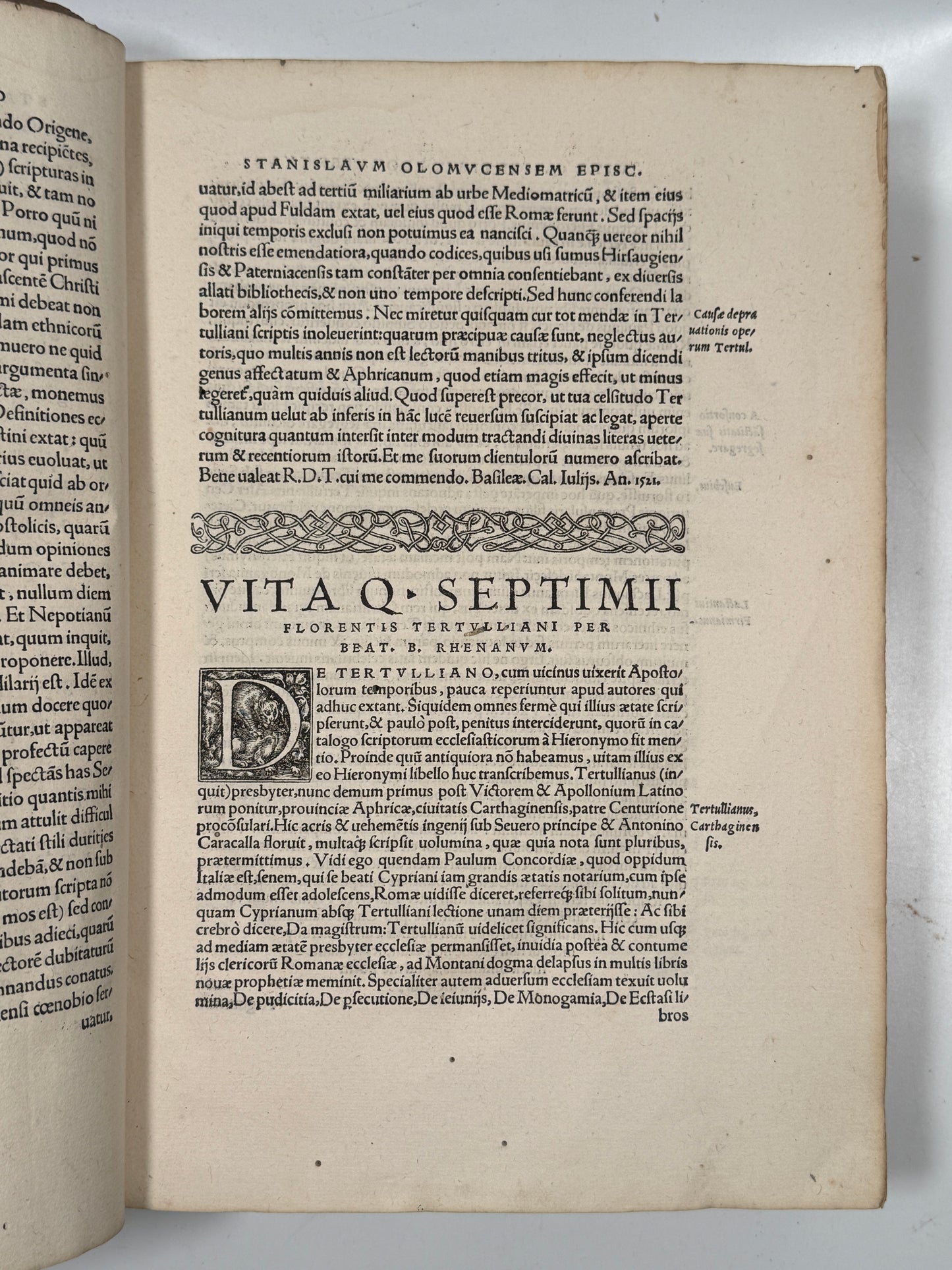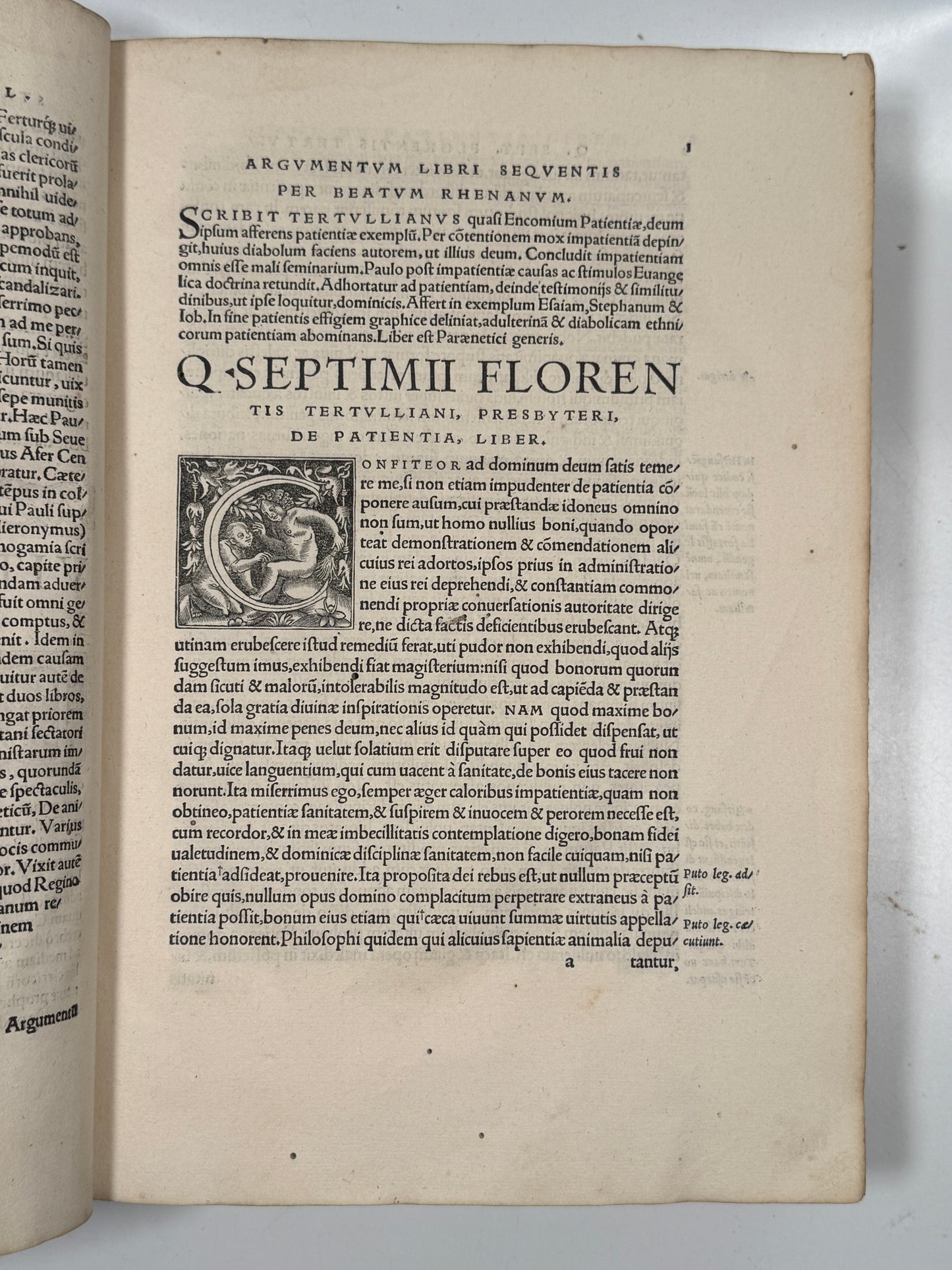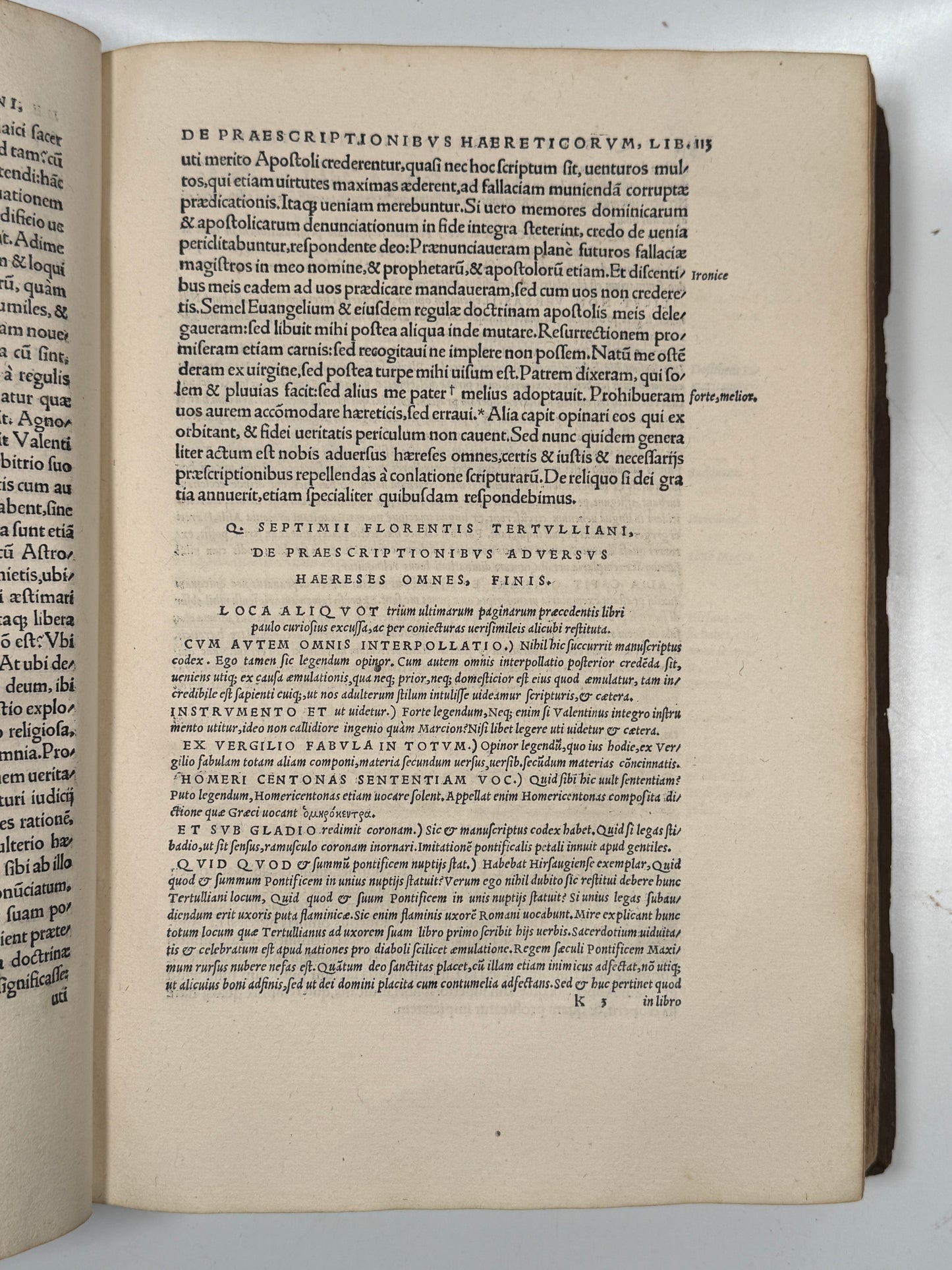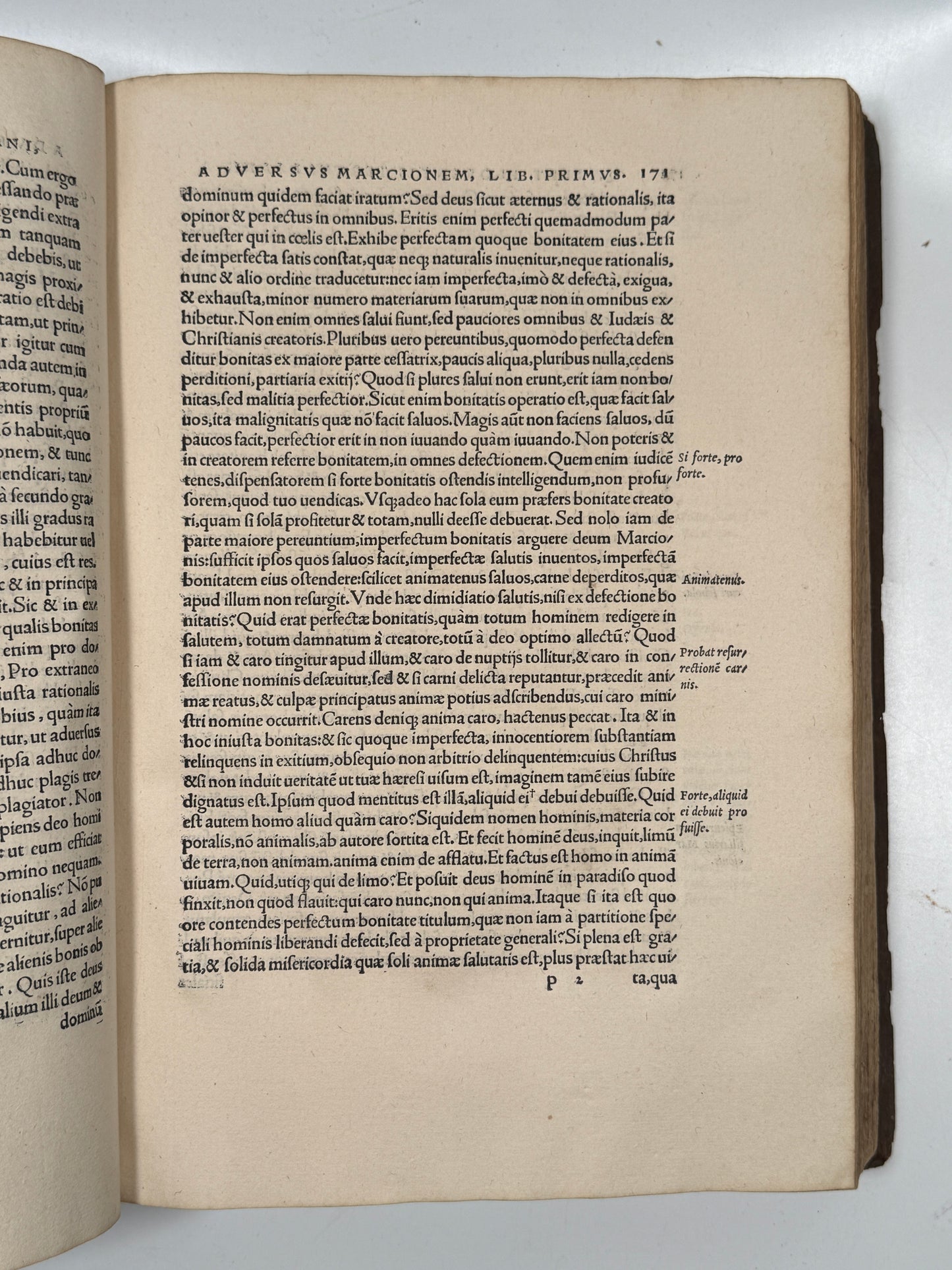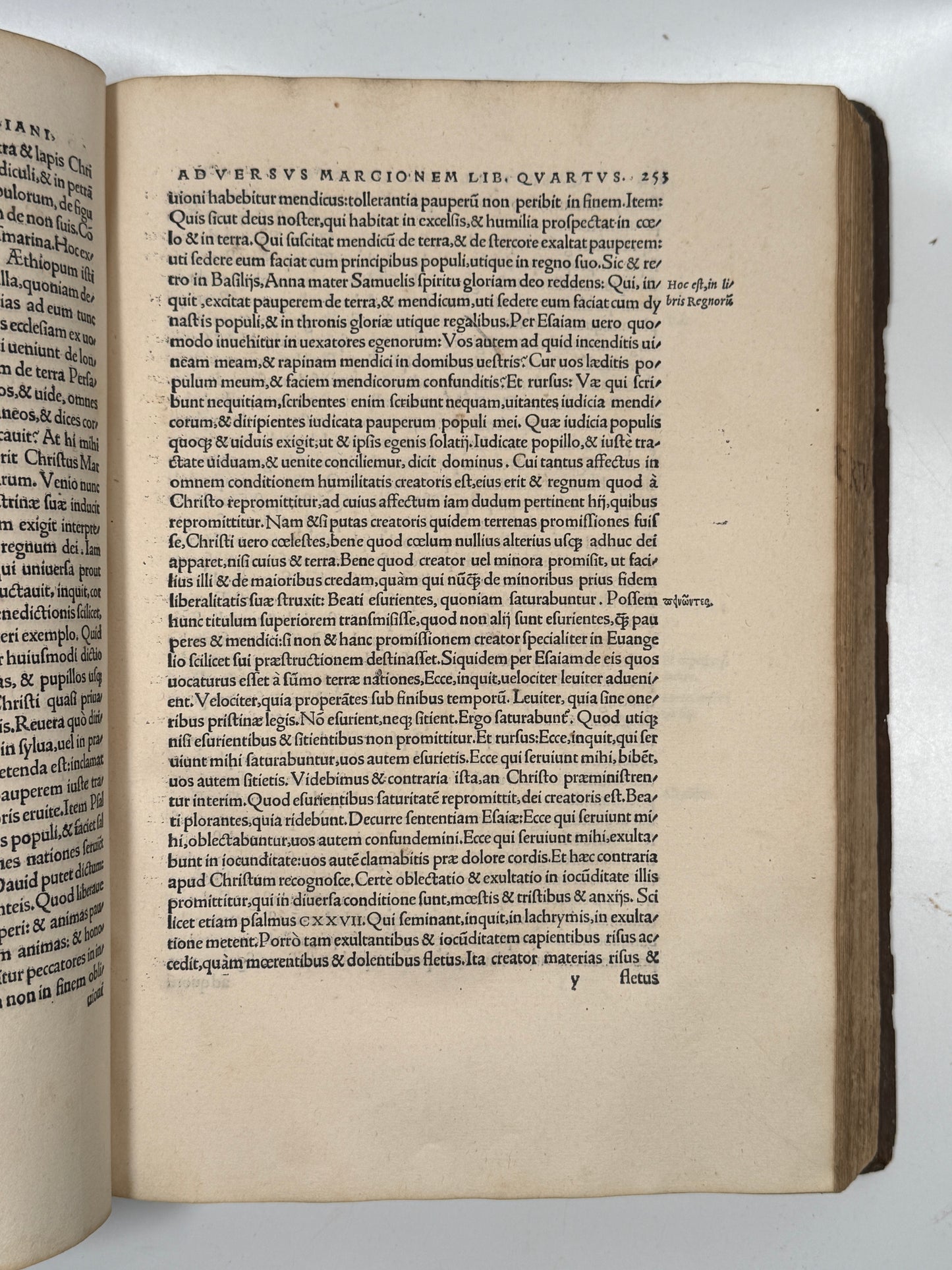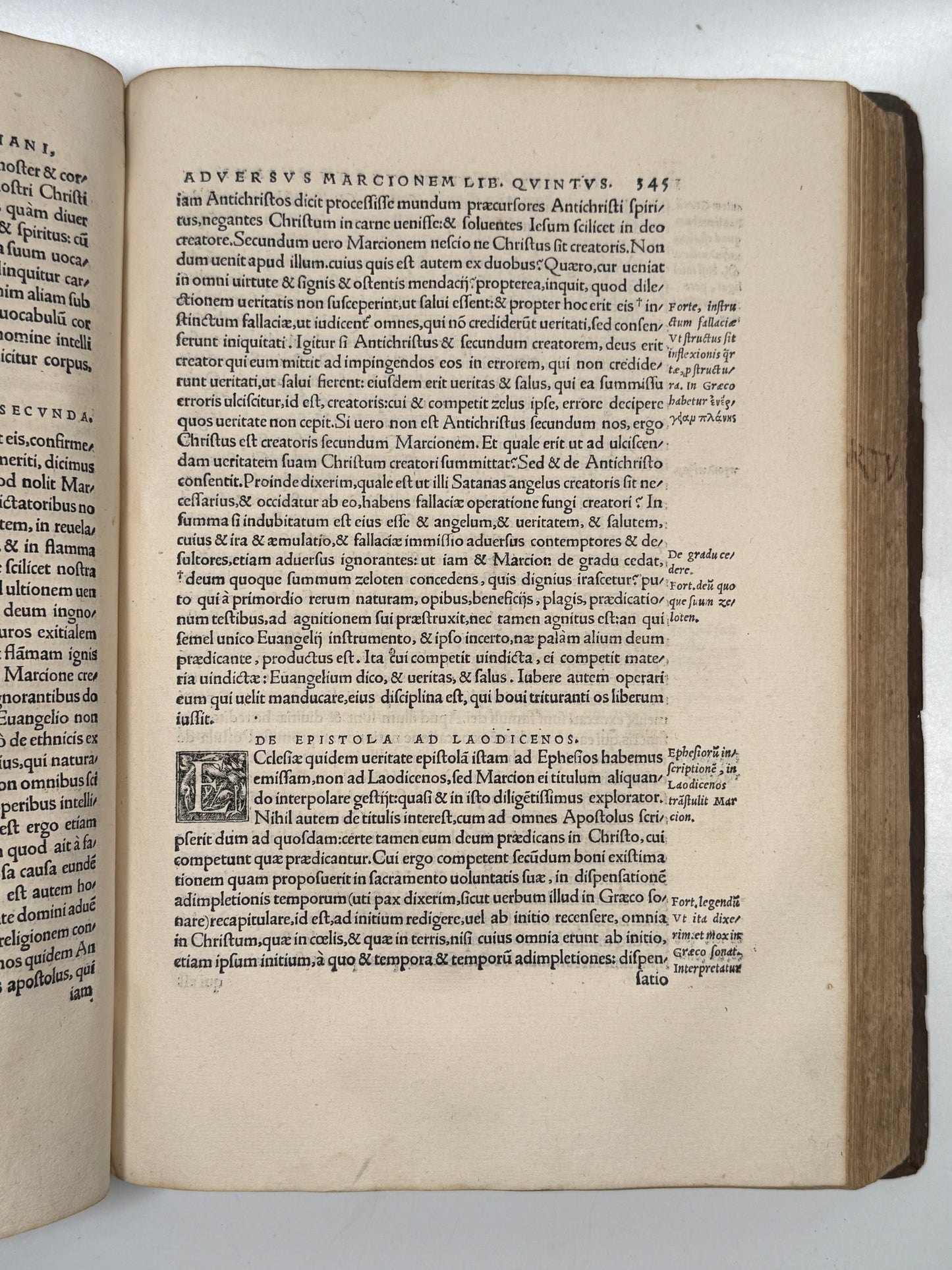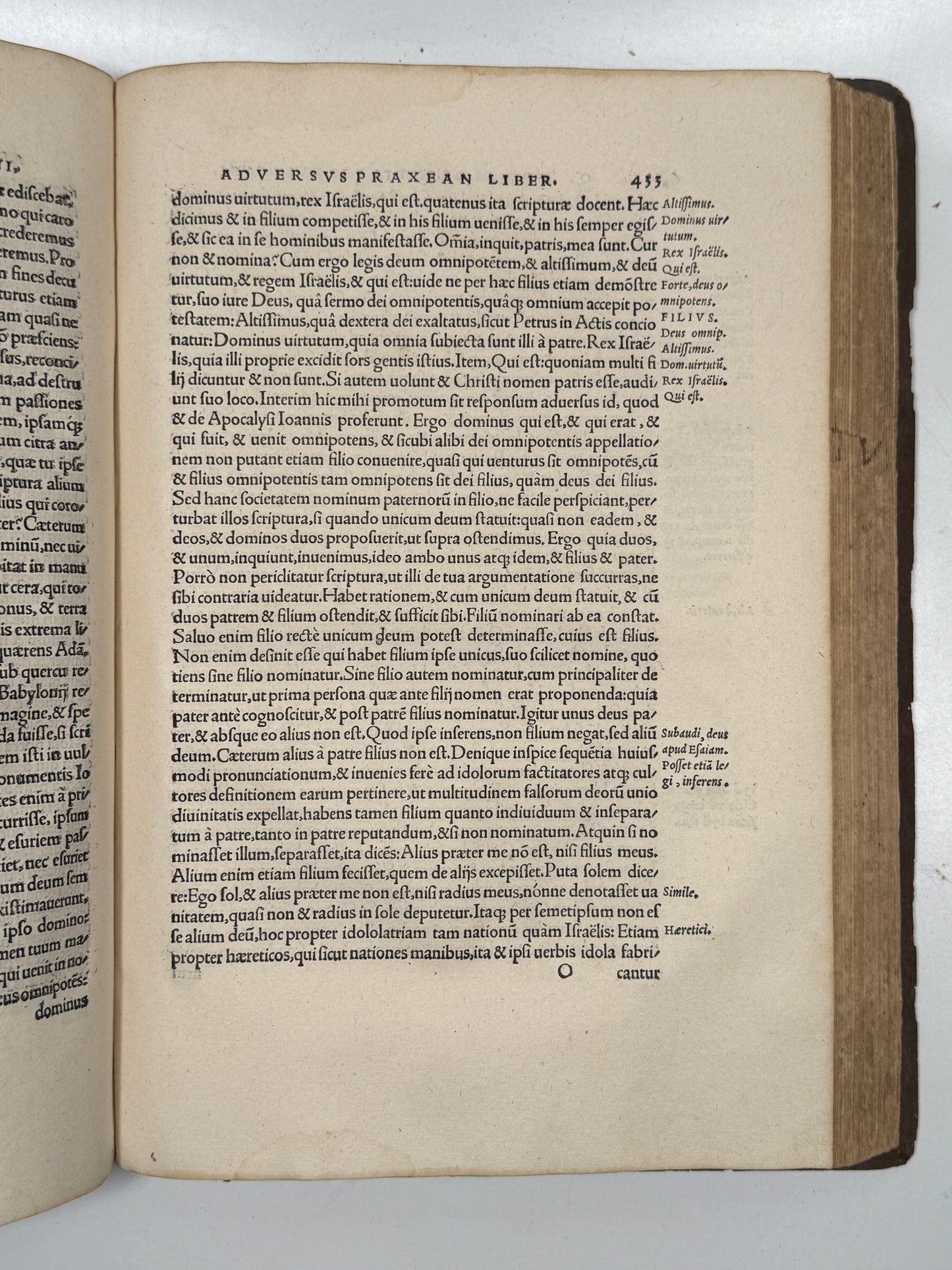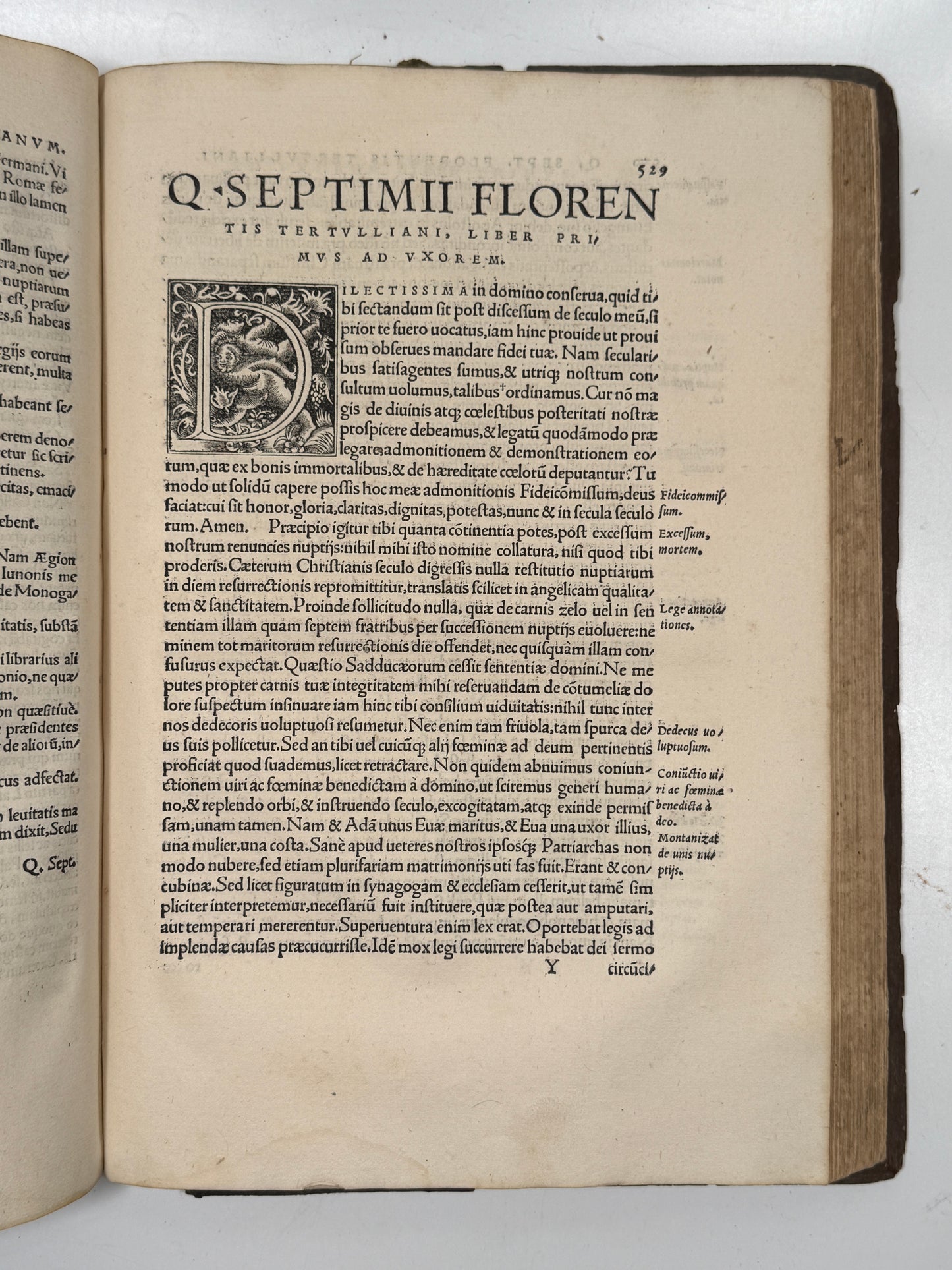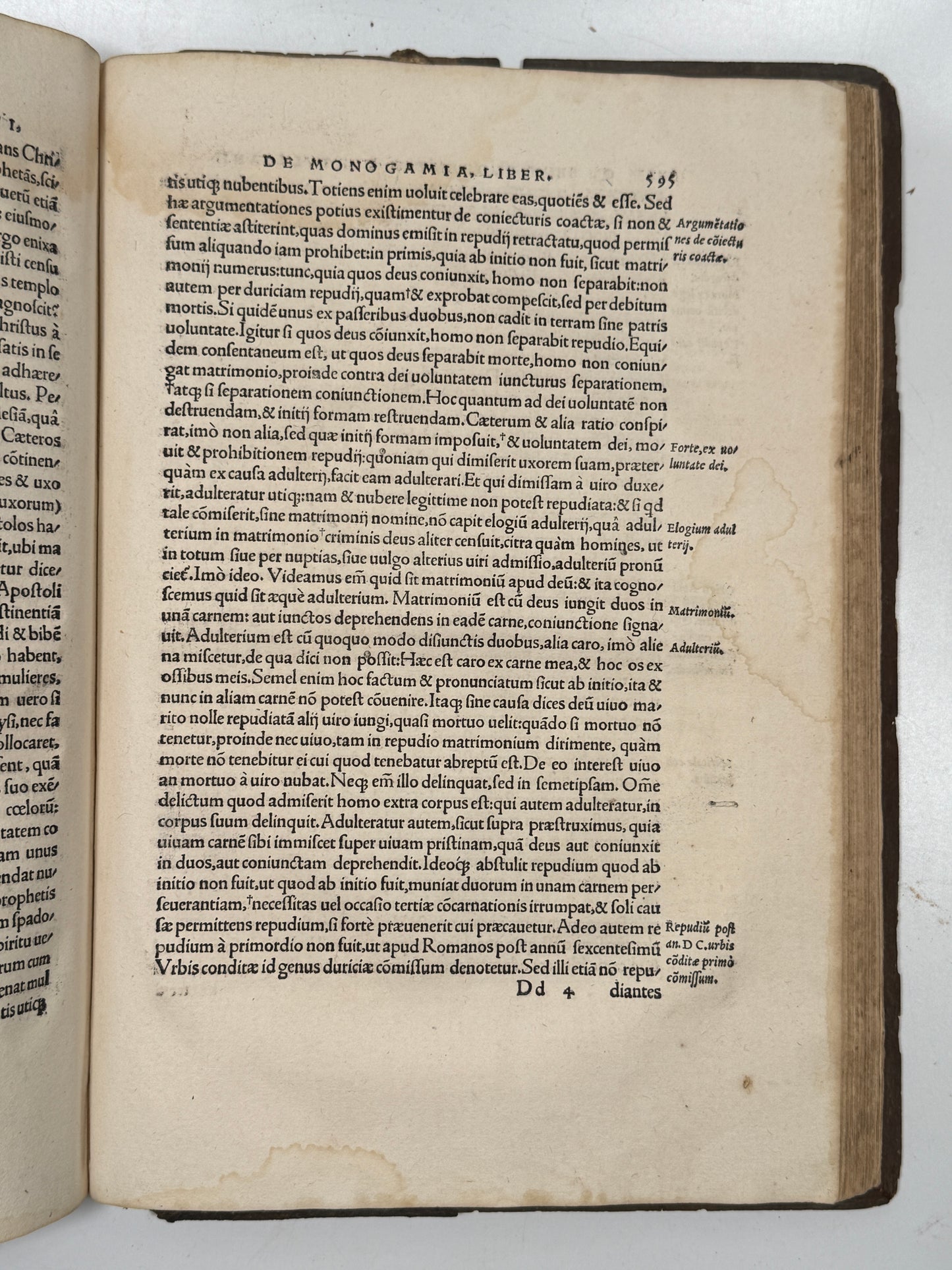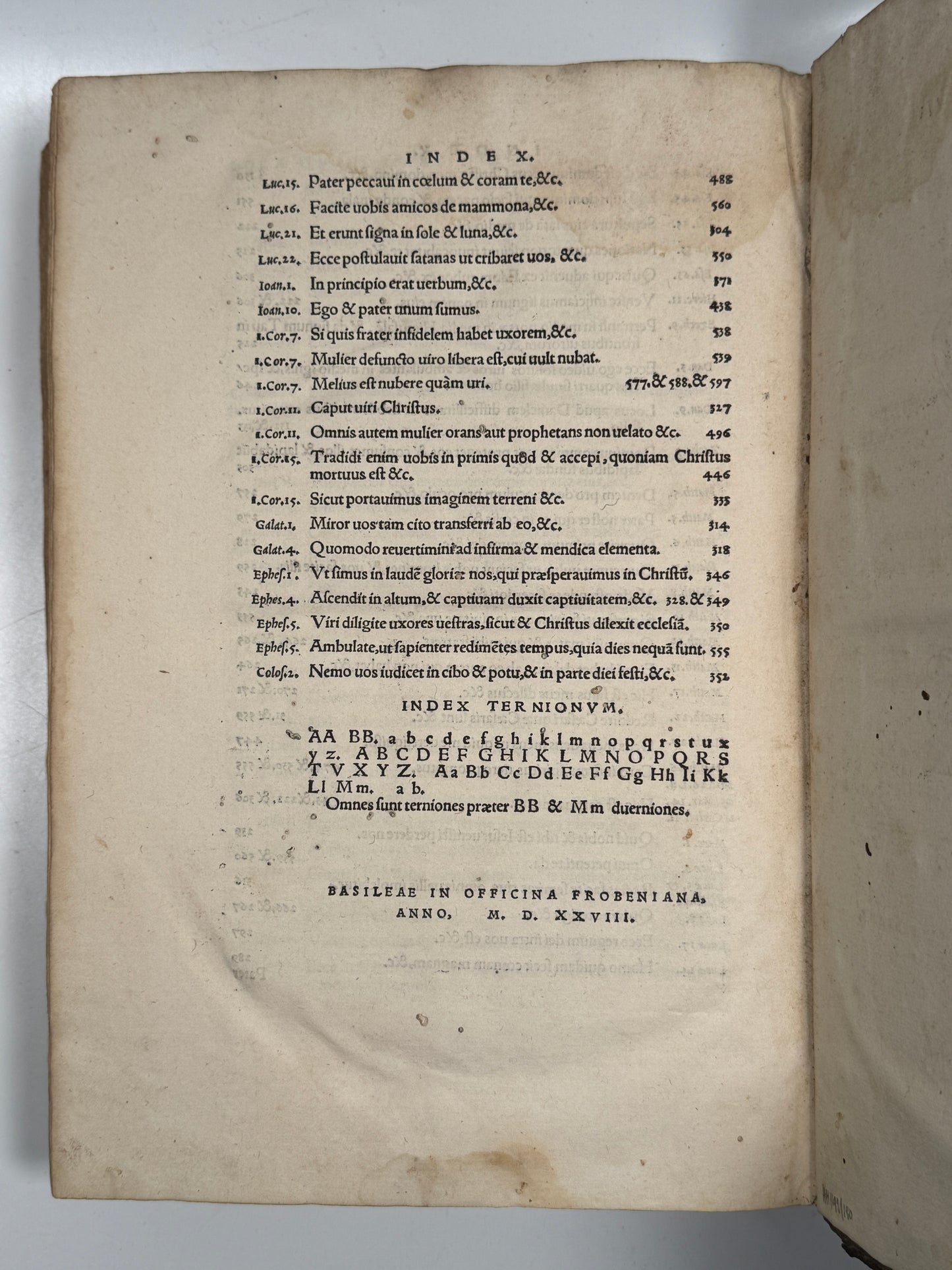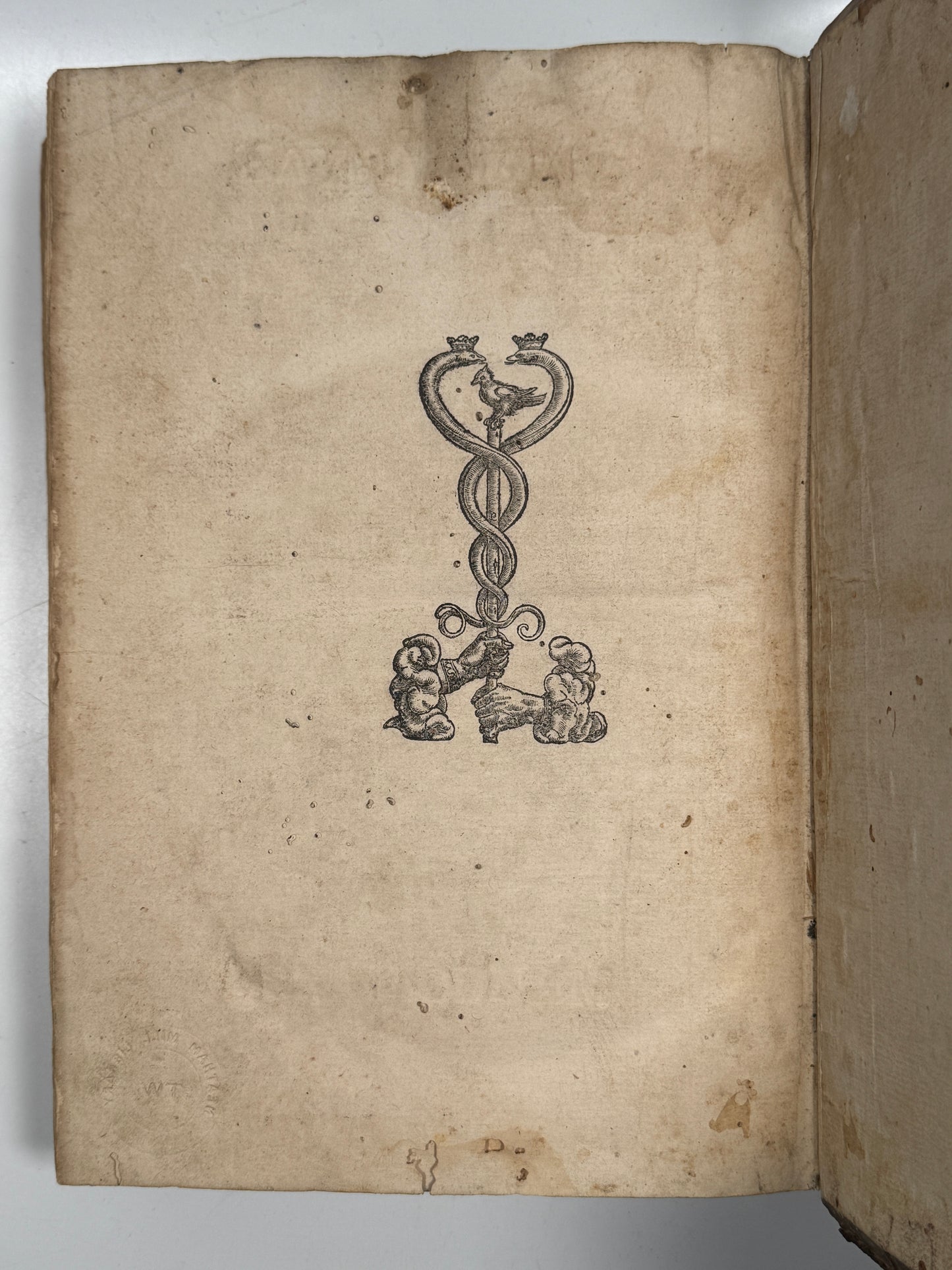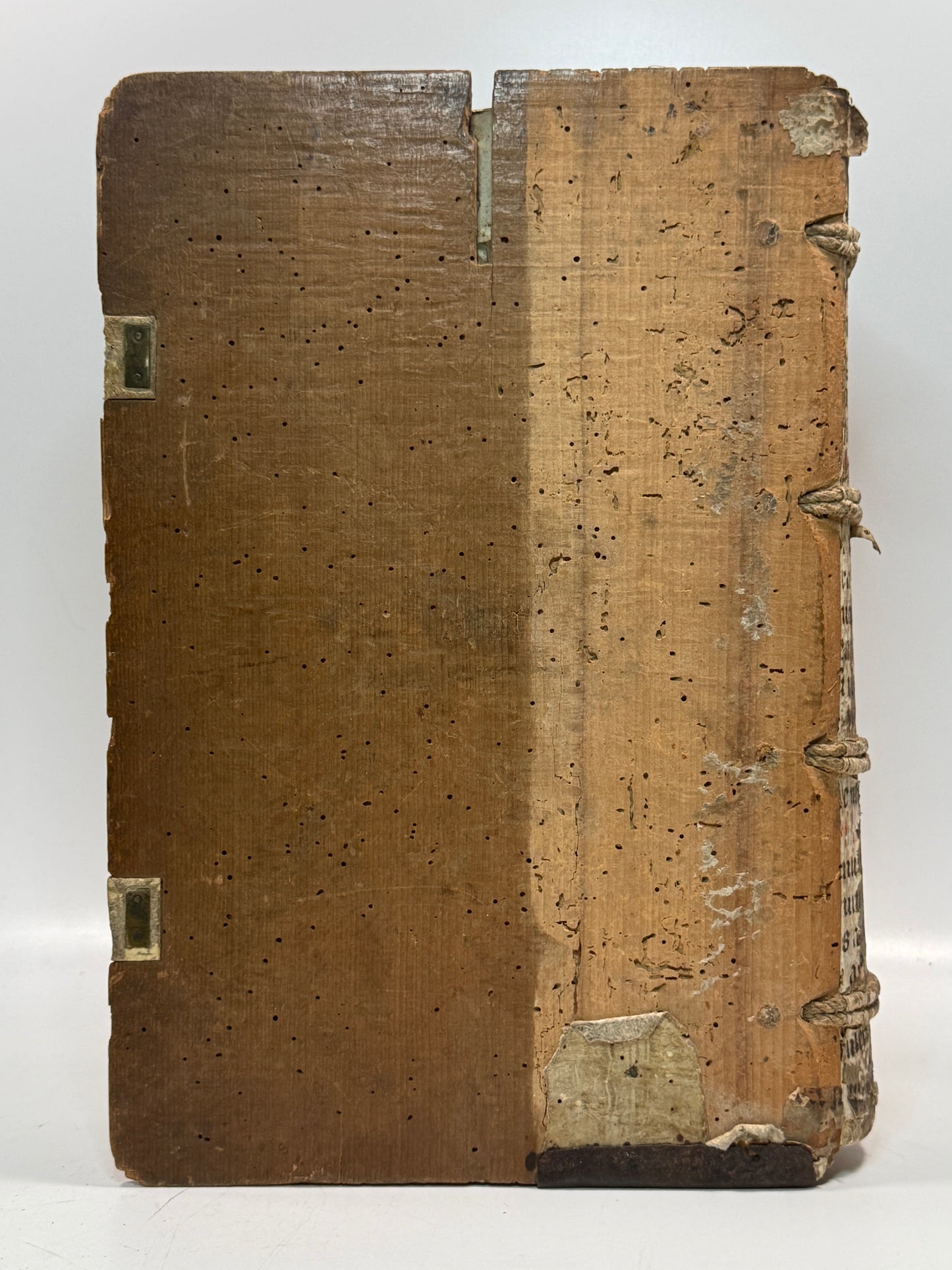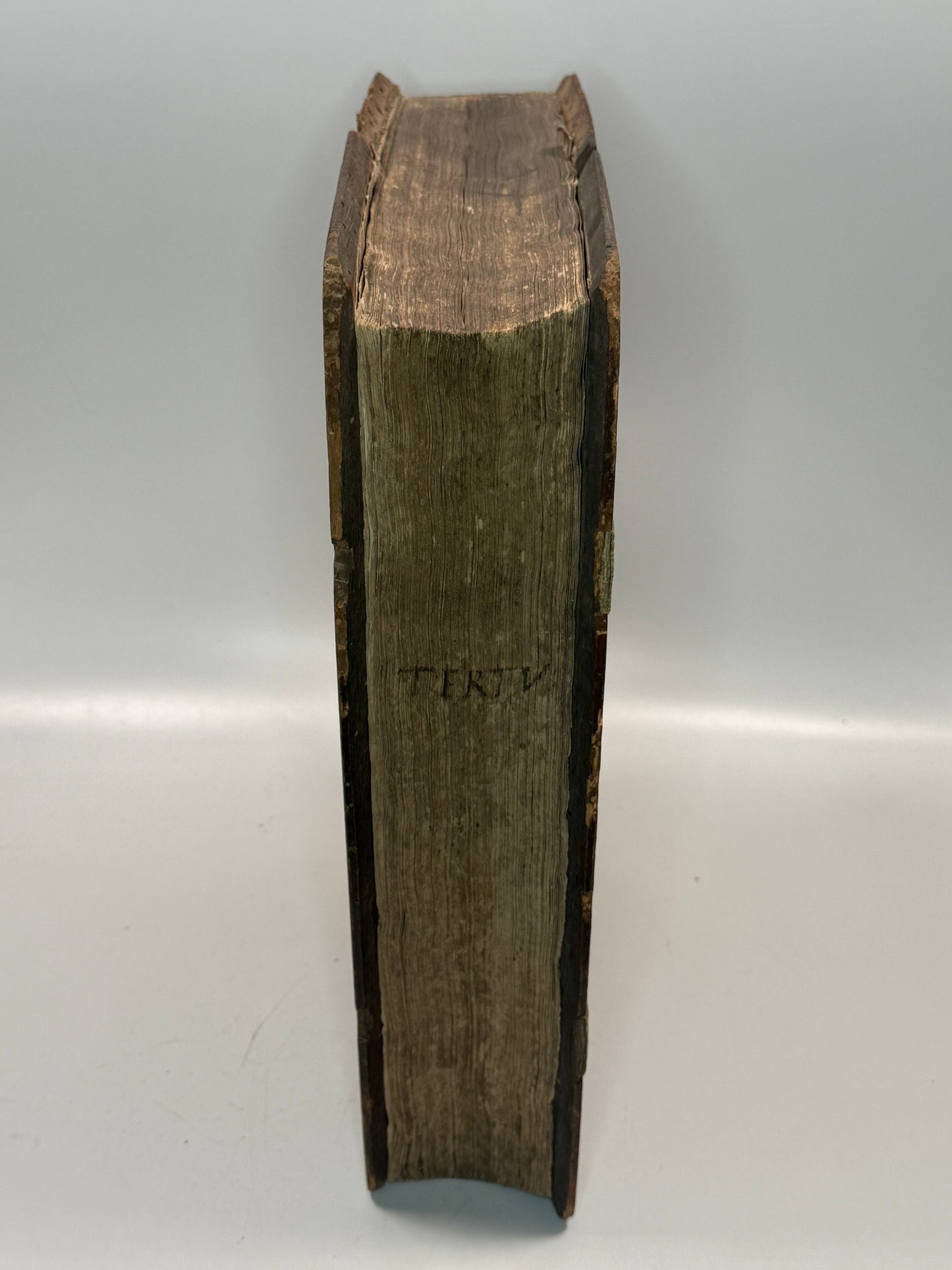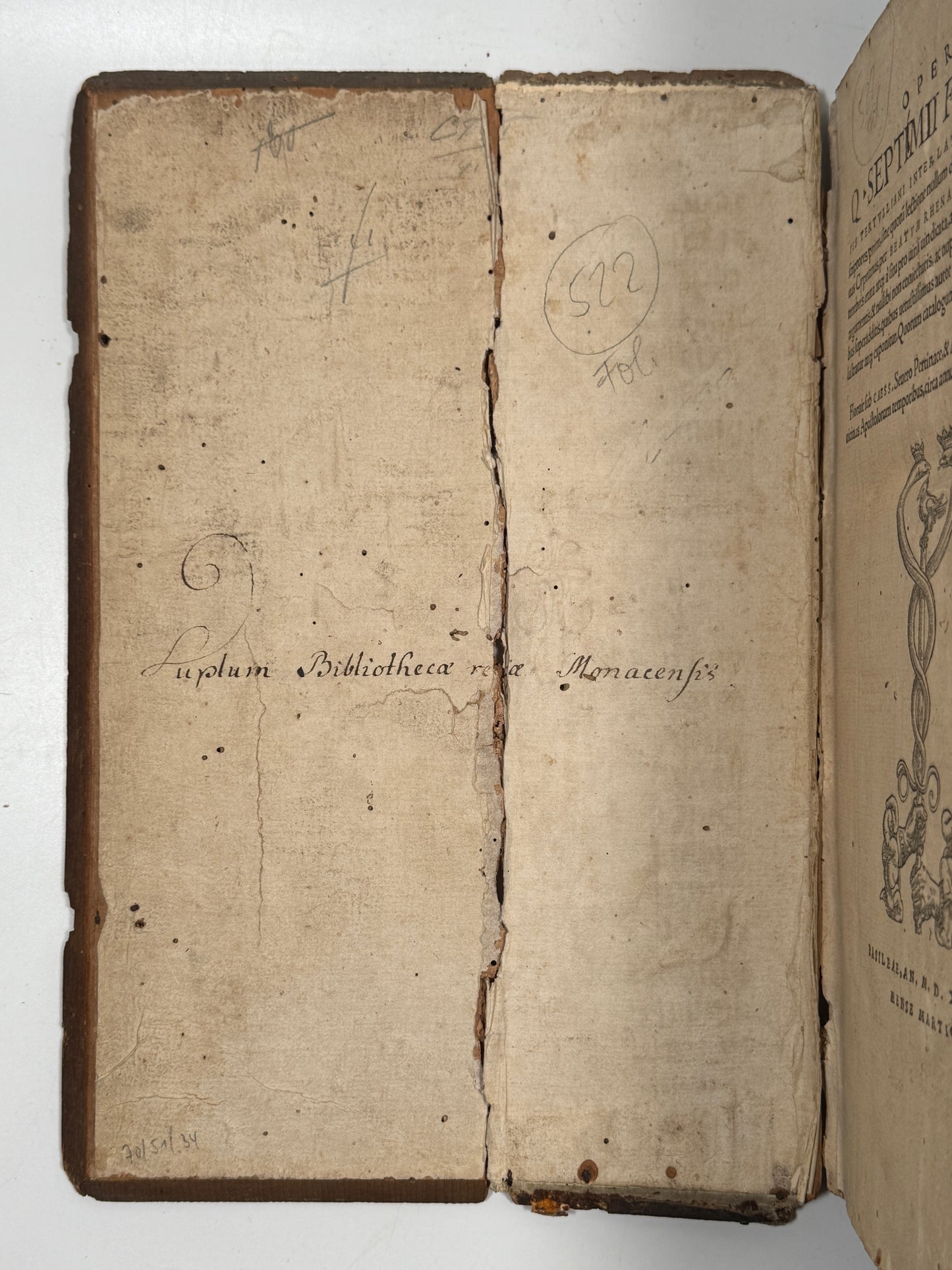The Works of Tertullian 1528 John Calvin's Edition
The Works of Tertullian 1528 John Calvin's Edition
Couldn't load pickup availability
Opera Q. Septimii Florentis Tertulliani Inter Latinos Ecclesiae scriptores primi, sine quoru lectione nullum diem intermittebat olim diuus Cyprianus, per Beatum Rhenanum Seletstadiensem e tenebris eruta [...]. Basel: Johannes Froben, 1528, folio.
The Works of Tertullian, the first among the Latin writers of the Church, whose writings the blessed Cyprian of old never let a day pass without reading, brought forth from darkness by Beatus Rhenanus of Sélestat […]. Basel: Johannes Froben, 1528, folio.
-------------------
"Tertullian was Calvin's sixth most popular patristic/medieval source, as measured by frequency of citation. There is ample evidence for his use of the 1528 Basel edition of Tertullian... Calvin cited Tertullian on a range of topics: mainly persecution and martyrdom, the eucharist, resurrection, tradition, free choice and the Trinity. The great majority of the citations are on the Trinity, as a result of the need to respond to claims made by Servetus and Gentilis. Calvin never mentions Tertullian's Montanism and also avoids approving any of his distinctively Montanist ideas. He claimed of Tertullian, as with Augustine, that he was ‘totus noster’ but this referred specifically to his teaching on the Trinity. In a different context he could refer to Tertullian's ‘crazy ideas’."
[Lane, A. (2002). Tertullianus Totus Noster? Calvin’s Use Of Tertullian. Reformation & Renaissance Review, 4(1), 9–34.]
This edition was prepared by the Alsatian humanist Beatus Rhenanus, one of the most important scholars of the early sixteenth century and a close collaborator of Johann Froben. A student of Lefèvre d’Étaples and Erasmus’s trusted associate, Rhenanus devoted his career to recovering and editing patristic and classical texts. His work on Tertullian was significant: by bringing the writings of the earliest Latin Church Father “out of darkness” (e tenebris eruta), Rhenanus supplied both Catholic and Protestant theologians with a critical text of immense polemical and doctrinal utility. This Froben folio thus stands at the intersection of Renaissance humanist scholarship and Reformation-era theology, and became the principal 16th century edition of Tertullian, following the editio princeps just a few years prior in 1521; this being the third edition following a second in 1526, but this was the standard and best edition and was used by John Calvin.
-------------------
Provenance:
"Duplum Bibliotheca Regia Monacensis", i.e. a duplicate copy from the Royal Library of Munich, now called the Bayerische Staatsbibliothek, one of the greatest European libraries, formed in 1558.
Later kept at the Neatham Mill Library with their unobtrusive blindstamp to foot of final leaf (the leaf with the printer's device verso).
-------------------
Size: 214 x 319 mm (approx.)
Condition:
[AA6, BB4, a-z6, A-Z6, 2A-2L6, 2M4, a-b6]
Collates as complete. Original wooden binding with medieval manuscript binder's waste visible to spine, title written in a contemporary hand to fore-edge: "Tertu". Lacks clasps. Some worming to binding, generally not affecting text, but with a few small worm tracks to final few leaves. Front board split in half but with both parts extant. Remnants of metalwork to foot of both boards and some of the vellum which would have covered the lighter part of the boards extant, with its original blindstamped design visible. Generally exceptionally clean throughout the text block. Title leaf slightly loose but securely attached. A few pencil inscriptions to front pastedown and head of title leaf recto, inscription from the Royal Library of Munich to front pastedown, unintrusive small blindstamp to foot of final leaf. Very minor dampstaining to final few leaves. A well preserved internally clean copy in its original binding.
